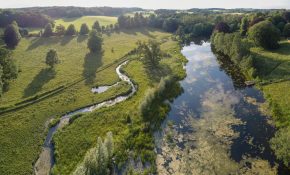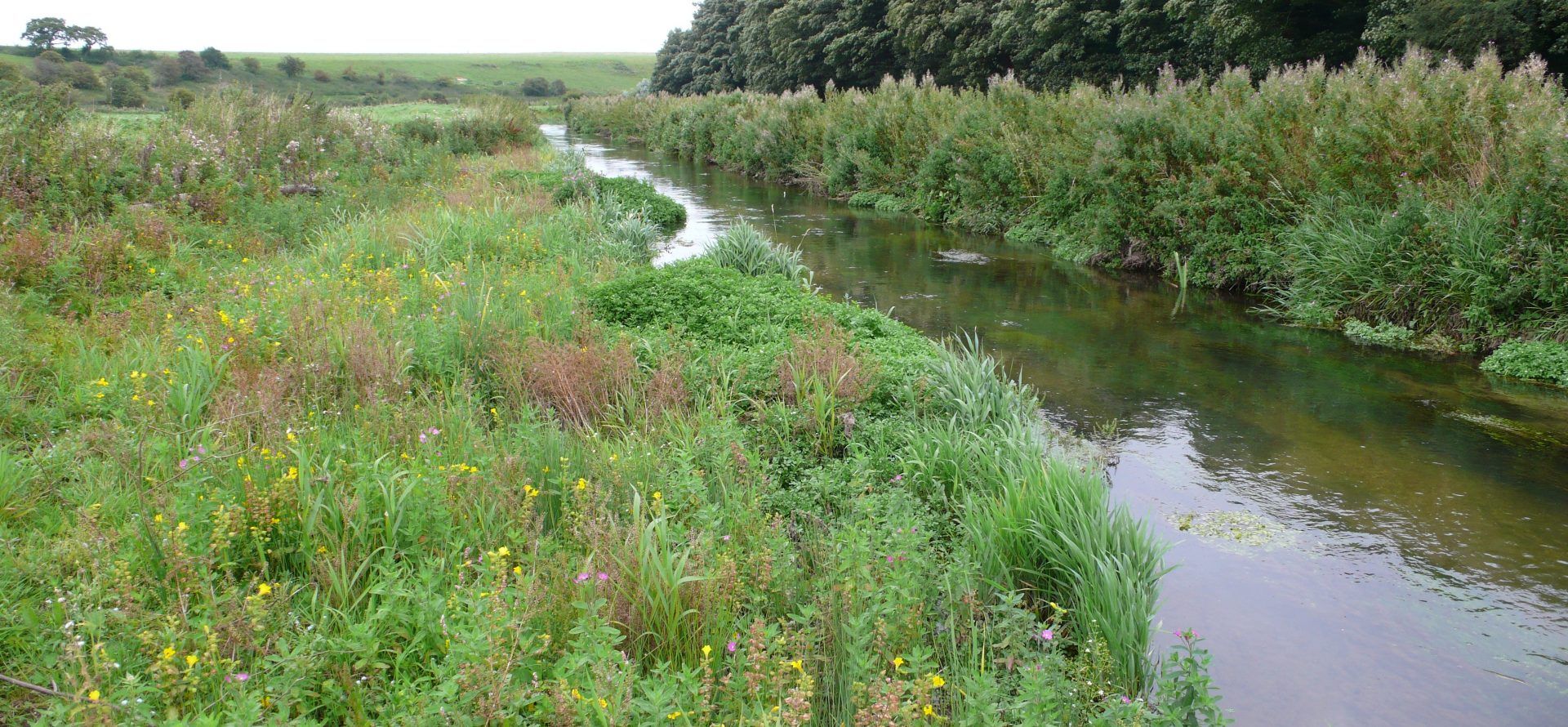Nine Chalk Rivers project
Nine Chalk Rivers
A variety of conservation, education and community projects have taken place on nine chalk-fed rivers in Norfolk (the Mun, Glaven, Stiffkey, Burn, Heacham, Ingol, Hun, Babingley and Gaywood) as part of a £1.3 million partnership between the Norfolk Coast AONB, Norfolk County Council, The Wild Trout Trust and local Environment Agency representatives.
Why Chalk Rivers?
The rivers of central Norfolk are unique due to their underlying chalk bedrock, which stretches across eastern England and Normandy. The permeable chalk acts as a sponge, absorbing rainfall and filtering the water, before it is released though springs and fissures. This action provides a constant supply of clean, mineral rich water to Norfolk’s chalk rivers.
Chalk rivers offer a unique environment for the growth of aquatic plants such as water crowfoot, starwort, fool’s watercress and water parsnip. The steady flows also provide constantly wet river margins that harbour water mint, hemp agrimony and marsh marigold. Amongst these plants, a huge variety of molluscs and crustaceans thrive, building shells and skeletons from the dissolved calcium – the largest of these is the white clawed crayfish (native to Britain but now seriously endangered by the arrival of the American signal crayfish).
Chalk streams are also noted for their rich insect life and many species of mayfly, caddis-fly, dragonfly and damselfly, which spend their early life stages feeding from the richly productive waters. Perhaps the most beautiful of these are the banded demoiselle damselflies, which can be seen dancing over the water in mid-summer. These jewelled predators feed on many of the less glamorous inhabitants of the river that emerge from the water in summer such as species of fly and midge.
The abundance and diversity of insect life helps sustain the communities of fish that inhabit the river. Most of these species – including trout, eels, lamprey and sticklebacks – colonised the rivers from the sea following the ice age and have since been joined by other fish including the bullhead and stone-loach. Each of these species have slightly different habitat requirements (fast or slow water and clean gravels or silt beds), which are met in a naturally diverse chalk stream.
The rivers are also home to a variety of mammals such as water vole and otters. The aquatic plant-life and marshy river edges provide excellent feeding areas for birds such as moor-hen, teal and the secretive wood-cock and snipe.
Over centuries, the rivers have made way for agriculture and have been straightened and dredged, drained and embanked. Fallen trees, an important source of shelter and food, have been removed, and in other places trees have been planted to purposefully drain springs and wetlands.
Reversing these processes is difficult, but effective, and can be achieved in places without a loss of agricultural productivity. In other places on the Nar and Babingley, Wensum and Glaven, Stiffkey and Burn, hidden stretches of these magical and unique habitats remain.

Each of the projects aimed to enhance the habitats in and around the river, whilst engaging and involving local schools and communities.
The projects that fall under this initiative include:
- A new channel for the Glaven at Bayfield
- De-silting at Baconsthorpe Castle
- Ecological restoration at Selbrigg Pond
- Riffles for Wiveton
- Restoring the Heacham at Norfolk Lavender Mill
- Sediment management in the upper Glaven
Acknowledgements:
This project was the result of a £1.3 million grant from the Environment Agency’s Catchment Restoration Fund.










